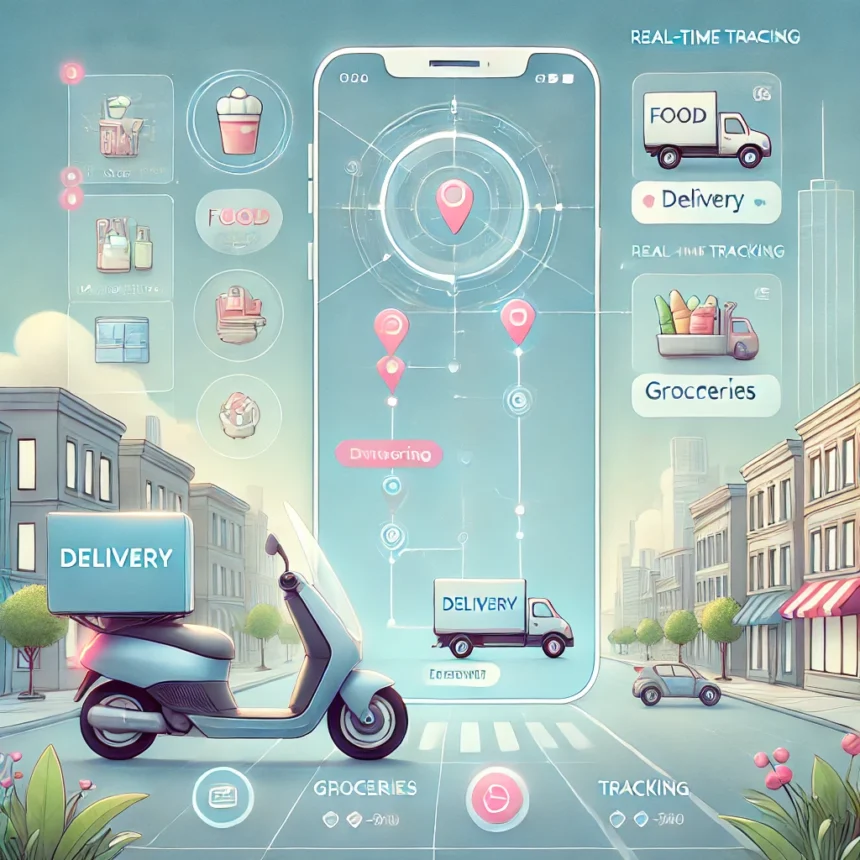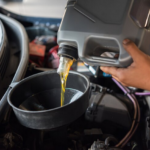The emergence of on-demand delivery companies alters customer access to goods and services. Platforms like Postmates have transformed how individuals connect with companies as demand for quick deliveries and convenience rises. This makes practically everything delivery-wise simpler than it has ever been before. Should you be thinking of starting your delivery app, Postmates offers a convincing template for reference. The Postmates business model, special characteristics, and ways you may apply these ideas to your app development plan will be discussed in this post.
Introduction to Delivery Apps
In daily life, delivery applications have suddenly taken the front stage. Consumers have grown accustomed to having groceries, food, retail items, and even medications delivered right to their homes at the click of a button. The market for delivery apps is explosive as companies like Uber Eats, DoorDash, Grubhub, and Postmates drive the rush.
Among the pioneers in the on-demand delivery market, Postmates—now controlled by Uber—offers consumers anything from food to devices, from any participating shop. Many businesspeople driven by its success have created their delivery apps to meet the growing need for speed and simplicity.
But what makes Postmates such a successful model? Let us now explore its special qualities and corporate plan.
The Postmates Model Explained
Postmates is fundamentally a logistics tool that links consumers with couriers who instantly pick up and deliver items. Highly flexible, the app lets consumers order food, groceries, drinks, and even office supplies from a variety of local businesses.
Postmates distinguishes itself with its “everything delivery” approach. Unlike food delivery apps, which are limited to eateries, Postmates can transport nearly anything you can buy locally, therefore generating a larger pool of possible consumers and businesses. Its value proposition centers on accessibility, rapidity, and a wide spectrum of delivery choices.
Postmates operates with a 3-party system:
- Consumers: Those using the app to make delivery orders.
- Merchants: Local companies or retailers from whom the items originate.
- Couriers: Drivers that pick up and deliver the goods are called couriers.
This strategy makes it simpler for companies to contact new clients and for customers to get items delivered fast since it makes the effective flow of orders and delivery possible.
Benefits of the Postmates Model
Using the Postmates concept has three main advantages for business owners wishing to start their delivery app. Among the most clear benefits are:
- Scalability: Leveraging a large network of local companies, the Postmates model facilitates fast scaling. You can quickly onboard new stores and, as a platform owner, you are free from inventory storage.
- Flexibility: Providing a range of delivery options—food, groceries, booze, and other goods—allows you to leverage many sectors and consumer demands.
- Quick Setup: Using a third-party courier system will help you start your app with fewer running challenges, therefore removing the requirement for direct manpower and warehouse space.
- Cost-Efficiency: Postmates does not pay for full-time drivers since it employs independent contractors, the couriers, therefore saving costs.
These advantages make Postmates the perfect template for a profitably flexible delivery software strategy.
Key Features of Postmates
Postmates clone Android delivery app platform appeals for several reasons. Knowing these characteristics can enable you to design a better user-friendly and effective app:
- Real-Time Tracking: Real-time tracking of delivery allows carriers as well as users to enhance openness and confidence.
- In-App Payment: Easy payment choices available via the app let users not worry about carrying cash or using outside payment methods.
- Multi-Product Delivery: Postmates lets consumers order from several vendors and mix deliveries, therefore improving the user experience by providing a great variety of options in one transaction.
- Live Notifications: Customers and couriers get alerts about order status including information on pickup and delivery.
- Dynamic Pricing: To guarantee couriers remain motivated and consumers are aware of the cost adjustments, the app uses surge pricing—especially during times of high demand.
These tools simplify the user interface, thereby enabling faster and more handy delivery.
Importance of Home Service App Development
Home service apps are in demand right now, never seen before. People want more and more the ability to have goods delivered to their homes, whether for grocery, restaurant delivery, or other items. Postmates follows this expanding trend by offering delivery services across several sectors, and creating a home service app might be a quite profitable endeavor.
Home service app development also gives local companies a simple point of contact with consumers. For small businesses and establishments, Postmates lets them provide delivery services without requiring large infrastructure or delivery teams, therefore suitable for new app developers.
Integrating the Postmates Model into a New App
Start building an app grounded on the Postmates model by working on the following elements:
- User Interface (UI): Create a neat, simple-to-use interface where consumers may peruse and place orders on products.
- Merchant Portal: Provide companies with a platform to track delivery, handle orders, and list their goods via Merchant Portal.
- Courier System: Provide a means for couriers to register, pick orders, and monitor delivery.
- Real-Time Tracking: Use GPS to provide couriers and consumers with real-time tracking capability.
- Payment Integration: Create safe payment processing to guarantee seamless app transaction capability.
Organizing your app around these key elements will help you to replicate the success of Postmates and provide exclusive features fit for your target market.
Essential Elements of a Successful Delivery App
Inspired by Postmates, think through these components to ensure your delivery app is successful:
- Ease of Use: Simplicity rules. The app should be user-friendly so that consumers may rapidly place orders and monitor delivery in real-time.
- Wide Merchant Network: Join forces with other kinds of companies—restaurants, supermarkets, convenience stores—to provide a large range of goods.
- Reliable Logistics: Build a reliable system for handling couriers and guaranteeing on-time delivery.
- Customer Support: Provide couriers and users with responsive assistance to handle any problems during the delivery process.
Choosing the Right Platform and Technology
You will have to choose the appropriate technological stack if you are developing a Postmates clone Android delivery app. Important factors comprise:
- Mobile Platforms: Create programs for iOS and Android to appeal to the biggest market.
- Backend Technologies: For scalability, choose dependable backend frameworks such as Node.js or Ruby on Rails.
- Geolocation and Mapping: Real-time tracking can be accomplished with Google Maps or Mapbox APIs using geolocation and mapping.
- Payment Integration: Incorporate PayPal or Stripe payment channels to securely manage purchases.
Enhancing User Experience
The success of every program depends on user experience (UX). Postmates shines in designing an understandable app with flawless functioning. Prioritize:
- Personalization: Customize the app experience depending on user preferences—such as noting preferred delivery sites or restaurants—using savings.
- Speed and Reliability: Make sure the app loads fast and efficiently handles orders to prevent delays.
Marketing and Growing Your Delivery App
Gaining momentum depends on good marketing plans. Take into account using:
- Social Media: Highlight on social media unique offers and discounts.
- Referral Programs: Encourage consumers to introduce friends with referral bonuses.
- Local Partnerships: Work with nearby companies to increase your profile.
Managing Logistics and Supply Chain
Through linking local companies with freelance couriers, Postmates provides a flexible and effective logistics system. Regarding logistics:
- Use Dynamic Routing: Use dynamic routing—that is, GPS-based route optimization—to cut delivery times.
- Automate Orders: Match orders with the closest accessible courier using an algorithm to reduce wait times.
Revenue Models and Monetization
Postmates makes money from merchant commissions, delivery fees, and service charges. You can: duplicate this model by:
- Charge Delivery Fees: Establish a basic delivery rate then charge more depending on distance or time.
- Merchant Commissions: Charge companies a portion of every transaction handled using the app.
Leveraging AI and Machine Learning
Including artificial intelligence will help to increase customer service and delivery effectiveness. Personalized recommendations, demand forecasts, and AI-driven route optimization help to simplify processes and increase user involvement.
Future of Home Service Apps
Home service apps like Postmates are probably going to incorporate increasingly sophisticated elements including autonomous delivery trucks, drone deliveries, and even more customized user experiences as technology develops. In this regard, the future presents great creative possibilities.
Conclusion
Postmates offers a perfect framework for starting a viable delivery app. For new businesses, its scalable business model, flexible distribution method, and dependence on real-time tracking make it a great template. Using Postmates’ primary ideas—partnering with nearby companies, using artificial intelligence, and guaranteeing a flawless user experience—you may make a delivery service unique in a crowded market.


